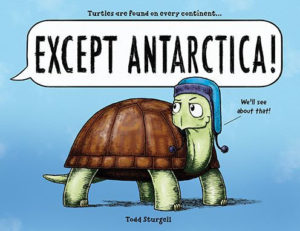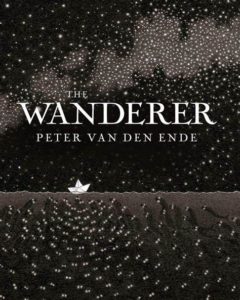This month’s author interview is with local (to me, at least!) writer Mifflin Lowe who’s an author, singer, songwriter, and musician.
Without rambling on about all that, I’ll just offer this–since a picture’s worth a thousand words, here are three pictures (ergo 3,000 words) that are positively Mifflin-esque.


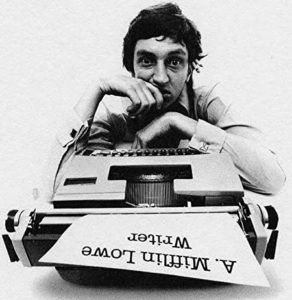
Okay, let’s zip ahead to the interview to discover a bit more about this imaginative picture book maker!
RVC: When did you first consider yourself to be a writer?
ML: I had to write a paper in seventh grade. I did it late Sunday night, and when I finally finished, I was so tired I fell into bed. My mother saw my bad handwriting so she copied it to make it legible. The teacher called us both in and accused my mother and me of cheating. My mother had not, in fact, changed a single word but he didn’t want to believe that. Since my mom had been an English major in college—and he thought she’d written it–that’s when I knew I was a writer.
RVC: Wow.
ML: I couldn’t wrestle. I couldn’t climb the rope in gym class. But from a young age, I knew I could write.
RVC: If it makes you feel any better, I couldn’t climb that darn rope either.
ML: And let’s not even talk about rope burns!
RVC: Rumor has it that you went to college for something other than writing.
ML: When I was a freshman at Princeton, I took Modern European Literature in this huge class, about 200 students. At the end of the semester, the professor held up two papers and said, “These are excellent.” I’d written one of them–on Kafka etc.. My roommate, who’d just assumed I was a nincompoop, was blown away. Knowing what I know now, I should’ve majored in English, but the emphasis at Princeton at that time was on 18th-century English literature, and I didn’t feel like spending four years reading or thinking about that.
At any rate, I took an art history course and loved it, so I chose art history as my major. My father was, naturally, horrified that he was spending a reasonably large amount of money to train me in something essentially useless.
RVC: I assume he recovered when you got a “real” job after college. What did you end up doing?
ML: I got a job as a copywriter and later a creative director for advertising agencies.
RVC: What did you learn there that would prove helpful in your later work as a kidlit author?
ML: Working in advertising taught me a lot about writing. It told me that you had to have a concept. Without a fundamental idea, it’s just a heap of words.
RVC: How did you go from that to writing books?
ML: Very few people actually want to be advertising writers. That included me. I was always thinking about other projects.
 I remember driving across Newport Bridge, and I had an idea–The Cheapskate’s Handbook. I realized this could be a book. This could sell. I wrote it and sold it to Price Stern Sloan, which was known for humor and novelty titles like How to Be a Jewish Mother. They got me immense amounts of publicity. I was on a couple of national TV shows and got interviewed for magazines. Along the way, I met Dudley Moore, Erma Bombeck (a wonderful person), and Tom Clancy. It was all great. Price Stern Sloan was definitely the right publisher. We sold 220,000 copies in English, and the book was published in three other languages–Swedish, Danish, and Italian.
I remember driving across Newport Bridge, and I had an idea–The Cheapskate’s Handbook. I realized this could be a book. This could sell. I wrote it and sold it to Price Stern Sloan, which was known for humor and novelty titles like How to Be a Jewish Mother. They got me immense amounts of publicity. I was on a couple of national TV shows and got interviewed for magazines. Along the way, I met Dudley Moore, Erma Bombeck (a wonderful person), and Tom Clancy. It was all great. Price Stern Sloan was definitely the right publisher. We sold 220,000 copies in English, and the book was published in three other languages–Swedish, Danish, and Italian.
RVC: What a fantastic start to a book-writing career!
ML: I started to think I wanted to write children’s books and create music to go with it, kind of like “The Point” by Harry Nilsson.
By the way, someone once asked me how I could write for children since my wife and I didn’t have kids at the time. I said, “Well, I was one.” With any luck, you don’t forget what it was like to be a kid.
RVC: Music seems to be a big theme throughout your life. When did you first get the music bug?
ML: My love for writing and music happened more or less at the same time. I mean, when you’re a young guy, who doesn’t want to be in a rock band, right? I was in some really good rock and roll bands in New Brunswick and New Jersey. Do you know the song “Brandy (You’re a Fine Girl)”?
RVC: I do indeed.
ML: When they were putting the group together, I was invited to be the singer. But I was going to school in Princeton and commuting to New Brunswick all the time. It had gotten to the point where I didn’t want to travel so I said no. I kind of regret that, a little bit. It could’ve been fun.
RVC: Speaking of regrets, what’s your biggest regret as a writer?
ML: I was invited to be on Oprah Winfrey’s show. This was well before she launched her book club, though. Her producers called me on a Monday and said, “Can you fly out here to Chicago for a show we’re shooting on Tuesday?”
I’d have to scramble to make all my own arrangements to get from Rhode Island to Chicago. I thought about doing a layover in LaGuardia Airport and all the hassle, and I just said, “Nope, I can’t do it.”
Everybody has at least one egregiously stupid thing that they do in their lives. That was one of mine, for sure.
RVC: In retrospect, that had to hurt.
ML: You’re telling me! I might have sold books in a few more languages.
RVC: Tell me more about how you made the move out of advertising and into the world of writing books?
ML: I started a music company that made jingles for TJ Maxx and other companies. That was fun. But I had two types of writing going–I was doing the children’s books, and I freelanced three days a week on advertising just to make money. One of my children’s book projects was a “ ‘Twas the Night Before Christmas” kind of story, twenty-four pages of rhyming couplets. I sent it around, and it actually got a good response from Maurice Sendak. He was so encouraging and nice.
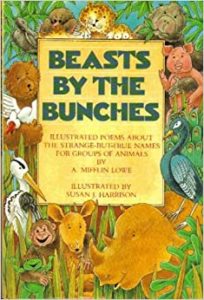 Around that time, I talked to a publisher and they said, “Well, we already have a story like yours in the backlog from established writers, and, honestly, the chances of breaking into this area aren’t good.” I didn’t quit. I just kept pursuing it. Perseverance is the most important thing in writing, other than some degree of talent. And that was when I came up with the idea for Beasts By the Bunches. It was poems and songs about the names for groups of animals, like a smack of jellyfish, a knot of toads, a watch of nightingales, and so forth. Doubleday bought it.
Around that time, I talked to a publisher and they said, “Well, we already have a story like yours in the backlog from established writers, and, honestly, the chances of breaking into this area aren’t good.” I didn’t quit. I just kept pursuing it. Perseverance is the most important thing in writing, other than some degree of talent. And that was when I came up with the idea for Beasts By the Bunches. It was poems and songs about the names for groups of animals, like a smack of jellyfish, a knot of toads, a watch of nightingales, and so forth. Doubleday bought it.
As someone who was in advertising, I used to work with art directors every day. So when the editor showed me the artist they wanted for the book, I told them I wanted someone else–somebody with a real cool, distinctive style like Chris Van Allsburg. They got very huffy and made it instantly clear that they didn’t care what I thought about the artwork or the artist. I was astonished. I came to realize that this was how it worked. You send the words, they buy the words, and then it’s “See you later!” while they put the book together on their own with whatever artist they pick.
RVC: What happened next?
ML: I wrote I Hate Fun. It was a humor book, not a picture book, but ironically, I had a great deal of fun writing it. I loved it. (Still do.) I spent nine months polishing it and getting it just perfect. A big-time agent got me a deal with a New York publisher. The publishing people said, “We like it. But can you change this, that, and a few hundred other things?” I was used to getting requests for changes in the advertising world, so I tried to do that.
With a humor book, if you take one sentence out of a paragraph, all of a sudden, it’s not funny anymore. You take one word out of a sentence, poof…the magic disappears. I tried and tried to rewrite it, but finally told them that I couldn’t do it. They passed on the project, but I got to keep the advance. Since they’d given me back the rights, I sold it to another publisher myself. Hah hah. I won…but the agent was not happy at all. I guess I’d made him look bad to the publisher.
RVC: It sounds like you’ve had mixed experiences with publishers.
 ML: That’s right. For my next few picture books, I decided I was just going to self publish them. I have this one called Cowboy Howie: The Adventure of the Central Park Coyote and Thanksgiving Day Parade. It’s the amazing adventures of a Black kid in New York City who wants to be a cowboy. I thought that was a great concept. I actually wrote it as a movie which won an award down here in Sarasota.
ML: That’s right. For my next few picture books, I decided I was just going to self publish them. I have this one called Cowboy Howie: The Adventure of the Central Park Coyote and Thanksgiving Day Parade. It’s the amazing adventures of a Black kid in New York City who wants to be a cowboy. I thought that was a great concept. I actually wrote it as a movie which won an award down here in Sarasota.
RVC: For those who want to hear the songs he wrote to go with it, here they are!
ML: I really wanted Cowboy Howie to be an animated film. In fact, that’s one of the reasons I moved to Sarasota–I wanted to be near Ringling College of Art and Design. The illustrator I found for the book version was a graduate from there, Martina Crepulja. She’s terrific.
RVC: A picture books of yours that I find charming is also self published and has art by Martina. Little Dog, Big Bark. Could you talk about that one?
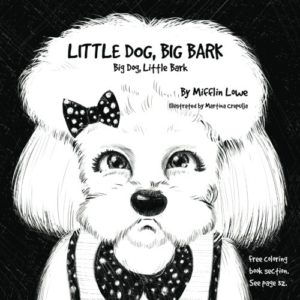 ML: The title, Little Dog, Big Bark is a concept, right? As I said, I always have to have a clear concept before I start writing. In terms of how I write, I get up in the morning, walk the dog, have breakfast, and then write for four or five hours. But it always starts with a concept. I’m sure you emphasize this in your classes–you don’t just sit down and start spewing out words. You have to have an idea, a concept behind it so that it that goes somewhere. The idea was generated by our dog, Phoebe, a Bichon Frisee who thought she was the biggest, toughest critter in the world, while my mom had a HUGE Great Dane that was sweet and gentle. I found the concept of two dogs being the opposite of what people presumed was funny and touching. In the end, the two dogs in the story realize they each “complete” each other and they become friends.
ML: The title, Little Dog, Big Bark is a concept, right? As I said, I always have to have a clear concept before I start writing. In terms of how I write, I get up in the morning, walk the dog, have breakfast, and then write for four or five hours. But it always starts with a concept. I’m sure you emphasize this in your classes–you don’t just sit down and start spewing out words. You have to have an idea, a concept behind it so that it that goes somewhere. The idea was generated by our dog, Phoebe, a Bichon Frisee who thought she was the biggest, toughest critter in the world, while my mom had a HUGE Great Dane that was sweet and gentle. I found the concept of two dogs being the opposite of what people presumed was funny and touching. In the end, the two dogs in the story realize they each “complete” each other and they become friends.
RVC: You’ve moved back to working with publishers with picture books like True West: Real Stories About Black Cowboys, Women Sharpshooters, Native American Rodeo Stars, Pioneering Vaqueros, and the Unsung Explorers, Builders, and Heroes Who Shaped the American West.
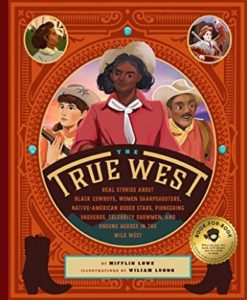 ML: The art director I had for The Cuddle Book was just great–David Miles. He left that publishing company and he went off to start Bushel & Peck Books on his own, and this new company has a great social impact–for every book they sell, they give one away to an underserved school, library, or neighborhood. And David’s art direction is just terrific. He and I really hit it off.
ML: The art director I had for The Cuddle Book was just great–David Miles. He left that publishing company and he went off to start Bushel & Peck Books on his own, and this new company has a great social impact–for every book they sell, they give one away to an underserved school, library, or neighborhood. And David’s art direction is just terrific. He and I really hit it off.
I sent him Cowboy Howie to see if he’d pick it up and redo it. We decided that I should do a similarly themed nonfiction book because people were really interested in the subject of Black cowboys. And so we did True West, which has brief biographies and photos and information.
The book is doing so well that David has ordered two more books from me. One is about the forgotten founding fathers–all the women and people of color involved in the Revolutionary War, of which there were quite a few, you know. The other is a kid’s encyclopedia of art, which connects back to my degree in art history. So, if my dad was still around, I could say “See? Art History isn’t completely useless!”
RVC: How do you measure success as a kidlit author?
ML: As a musician, I used to do 200+ school and library visits a year. I’d play, sing, and tell stories. I always measured my success by the looks on the kids’ faces. I remember going to one library, for instance, and the librarian said, “Oh, God, please just keep them happy.” Apparently, an author had come in the week before and just read a book to them. Do that, and you lose kids in two or three minutes. They’re bouncing off the walls, they’re not paying attention to you, they’re running all over the place.
My mantra was always this: you don’t perform at kids, you perform WITH kids.
You can always tell if it’s going well because kids will respond if they’re treated like human beings. So, I worked hard to make them part of my show. If they sing along, dance, laugh, or smile back at me, I’m doing fine.
RVC: Kids are the best audience.
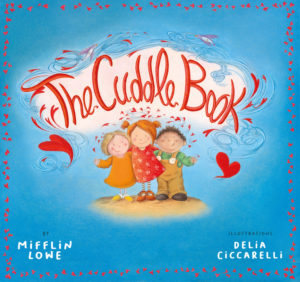 ML: Kids are also the toughest audience. If they don’t like what you’re doing, they don’t hide it. On the other hand, if they’re into it, you can see it in their faces. People send me pictures of kids reading my books. For example, a local tennis teacher’s son LOVES The Cuddle Book. He insists that it be read to him every night. He even told his mom he wanted to take it into the bathtub with him.
ML: Kids are also the toughest audience. If they don’t like what you’re doing, they don’t hide it. On the other hand, if they’re into it, you can see it in their faces. People send me pictures of kids reading my books. For example, a local tennis teacher’s son LOVES The Cuddle Book. He insists that it be read to him every night. He even told his mom he wanted to take it into the bathtub with him.
RVC: Clearly, The Cuddle Book is that kid’s favorite. When people ask YOU which of your own books is YOUR favorite, what do you say?
ML: The humor book, I Hate Fun. It just amuses me.
RVC: Okay, it’s time for the speed round. Fast questions and even faster answers. Mifflin Lowe, are you ready?
ML: Oh jeez. Let’s do it.
RVC: If we overheard you singing in the shower, we’d hear…
ML: The Donovan song, “Under the Greenwood Tree” (lyrics by William Shakespeare!). Or maybe The Beatles’ “Hello, Goodbye.” Lately it’s been “Amanda Jones” by The Rolling Stones from Between the Buttons–an underappreciated album.
RVC: Your favorite local place for oysters?
ML: Crab & Fin in St. Armand’s Circle.
RVC: If Netflix made your life story into a movie, who’d play the role of you?
ML: Ben Stiller. Or maybe Steve Martin.
RVC: Your picture book philosophy?
ML: To make kids smile.
RVC: Who’s your picture book hero?
ML: Maurice Sendak. And Chris Van Allsburg, too. He gave one of my books a real good blurb, and his art is just great. Amazing.
RVC: What’s the best thing a kid ever said about your writing?
ML: The kid who wanted to take a bath with The Cuddle Book is at the top of the list. I mean, he insisted on having it read to him every night. That’s what an author wants to hear. It doesn’t get any better than that.
RVC: Thanks so much. This was a real treat!

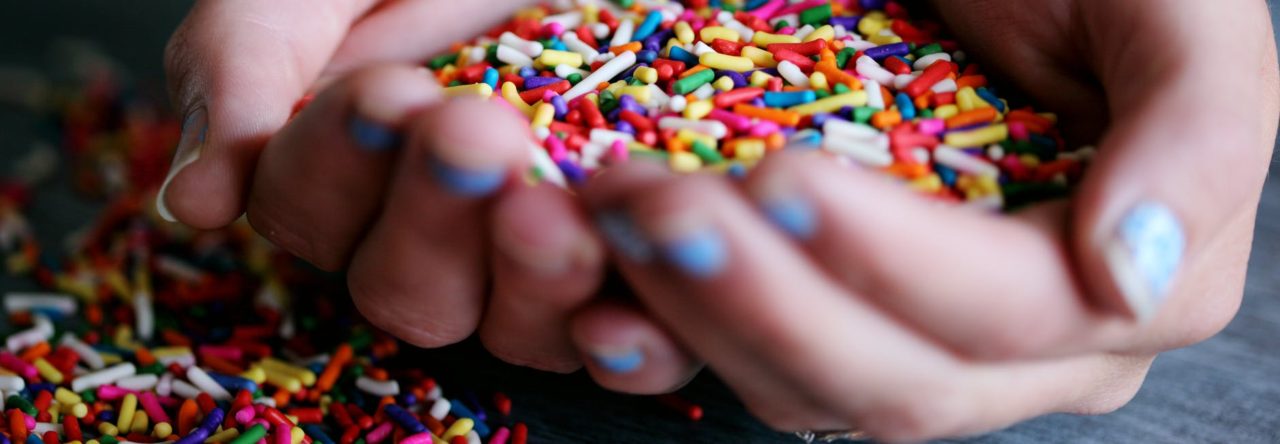

 David C. Gardner is an award-winning illustrator and visual development artist. A former artist for Walt Disney Animation Studios, he has illustrated numerous picture books, including his latest from Sleeping Bear Press,
David C. Gardner is an award-winning illustrator and visual development artist. A former artist for Walt Disney Animation Studios, he has illustrated numerous picture books, including his latest from Sleeping Bear Press,  This month’s Industry Insider Interview is with Emily Mitchell, an agent at
This month’s Industry Insider Interview is with Emily Mitchell, an agent at 
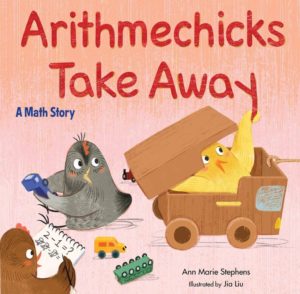
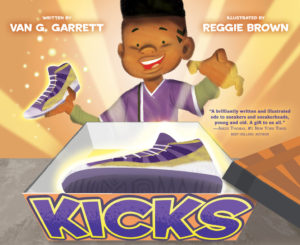
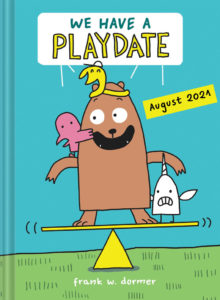
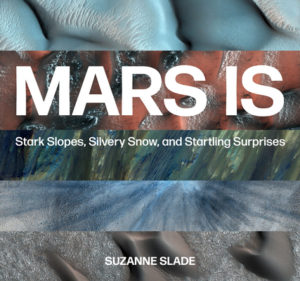
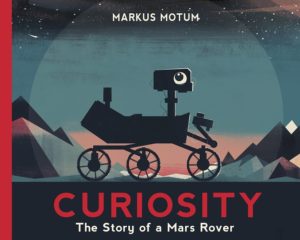
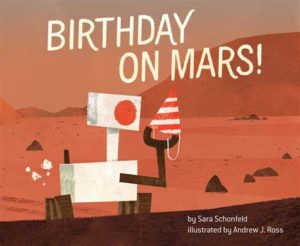
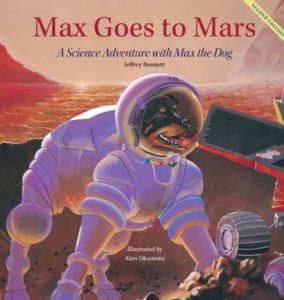
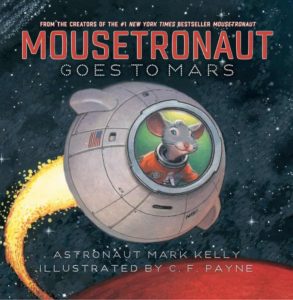
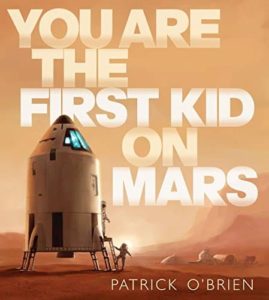
 This month’s interview is with Todd Sturgell, an author/illustrator whose first book,
This month’s interview is with Todd Sturgell, an author/illustrator whose first book, 